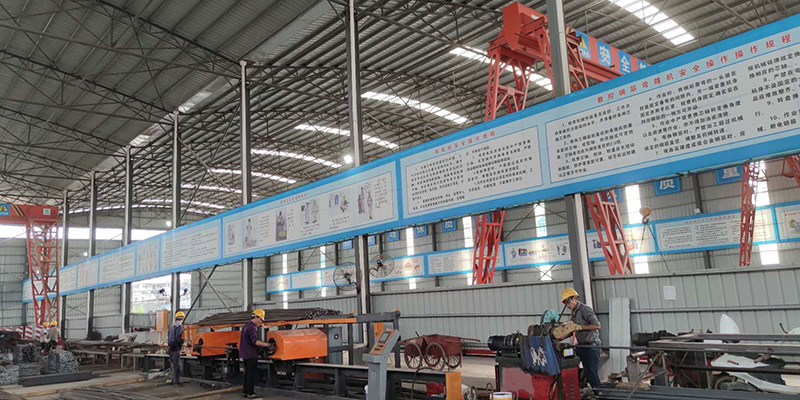Rebar is a common name for hot-rolled ribbed steel bars. The grade of ordinary hot-rolled steel bar consists of HRB and the minimum yield point of the grade. H, R, and B are the first letters of the three words, Hotrolled, Ribbed, and Bars, respectively.
Introduction of Rebar
Rebar is a common name for hot-rolled ribbed steel bars. The grade of ordinary hot-rolled steel bar consists of HRB and the minimum yield point of the grade. H, R, and B are the first letters of the three words, Hotrolled, Ribbed, and Bars, respectively.
The hot-rolled ribbed steel bar is divided into three grades: HRB335 (the old grade is 20MnSi), grade three HRB400 (the old grade is 20MnSiV, 20MnSiNb, 20Mnti), and grade four HRB500.
Rebar is a ribbed steel bar on the surface, also known as ribbed steel bar, usually with 2 longitudinal ribs and transverse ribs evenly distributed along the length direction. The shape of the transverse rib is spiral, herringbone and crescent shape. Expressed in millimeters of nominal diameter. The nominal diameter of a ribbed bar corresponds to the nominal diameter of a round bar of equal cross-section. The nominal diameter of the rebar is 8-50 mm, and the recommended diameters are 8, 12, 16, 20, 25, 32, and 40 mm. Ribbed steel bars are mainly subjected to tensile stress in concrete. Due to the action of ribs, ribbed steel bars have greater bonding ability with concrete, so they can better withstand the action of external forces. Ribbed steel bars are widely used in various building structures, especially large, heavy, light thin-walled and high-rise building structures.

Rebar Production Technology
Rebar is produced by small rolling mills. The main types of small rolling mills are: continuous, semi-continuous and row. Most of the new and in-use small rolling mills in the world are fully continuous. Popular rebar mills are general-purpose high-speed rolling rebar mills and 4-slice high-production rebar mills.
The billet used in the continuous small rolling mill is generally a continuous casting billet, the side length is generally 130~160mm, the length is generally about 6~12 meters, and the single billet weight is 1.5~3 tons. Most of the rolling lines are alternately arranged horizontally and vertically, to achieve torsion-free rolling across the line. According to different billet specifications and finished product sizes, there are 18, 20, 22, and 24 small rolling mills, and 18 is the mainstream. Bar rolling mostly adopts new processes such as stepping heating furnace, high-pressure water descaling, low-temperature rolling, and endless rolling. Rough rolling and intermediate rolling are developing in the direction of adapting to large billets and improving rolling accuracy. Improved accuracy and speed (up to 18m/s). The product specifications are generally ф10-40mm, and there are also ф6-32mm or ф12-50mm. The steel grades produced are low, medium and high carbon steel and low alloy steel that are widely demanded by the market; the maximum rolling speed is 18m/s. Its production process is as follows:
Walking furnace → roughing mill → intermediate rolling mill → finishing mill → water cooling device → cooling bed → cold shearing → automatic counting device → baler → unloading stand. Weight calculation formula: outer diameter Х outer diameter Х0.00617=kg/m.
Post time: Jun-09-2022
